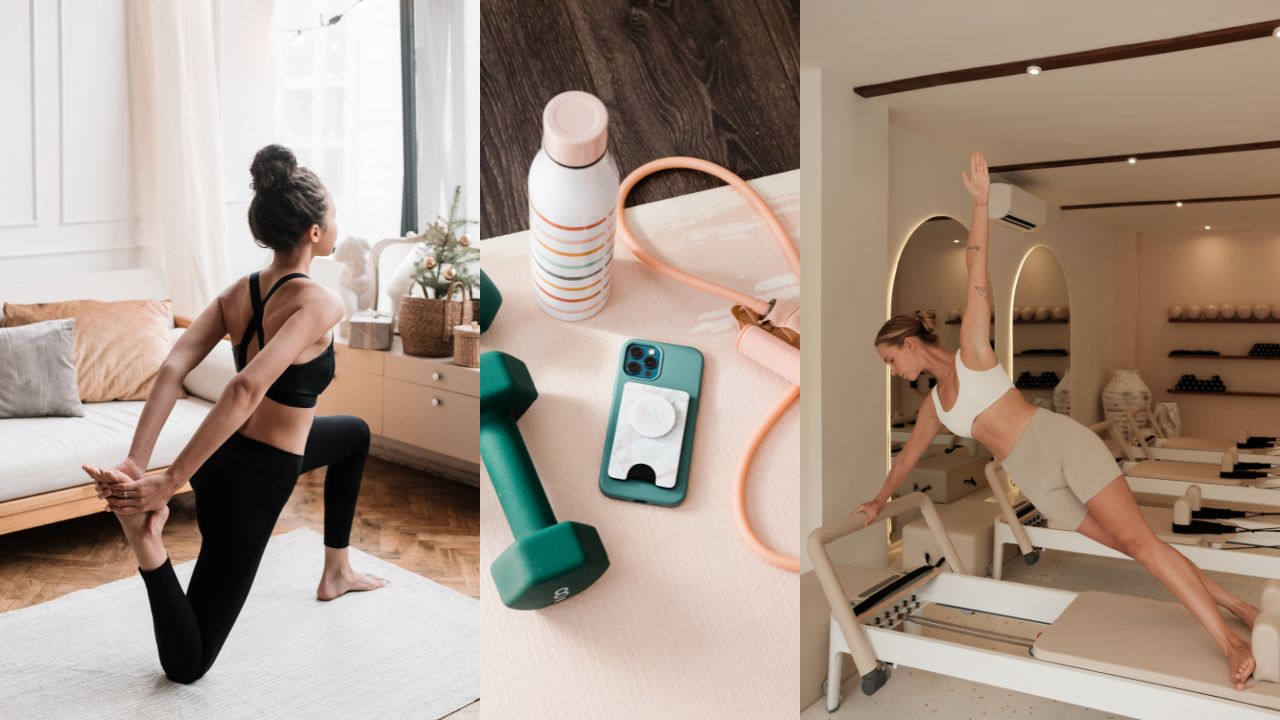Busy schedules have become the norm in today’s professional world. Between long work hours, commuting, family commitments, and the constant pull of digital distractions, finding time to hit the gym can feel impossible. Many professionals recognise the importance of staying active, yet the thought of carving out 60–90 minutes for exercise often leads to skipped workouts and guilt.
The good news is that staying fit doesn’t always require gym memberships, expensive equipment, or hours of free time. With a little creativity and consistency, you can build an effective workout routine at home, fitting exercise into your lifestyle rather than fighting against it.
At-home workouts offer flexibility, privacy, and accessibility. Whether you live in a small flat, travel often for work, or simply prefer exercising in your own space, the right set of exercises can help you improve strength, stamina, and overall health. Follow this to practical exercises for busy professionals, tips to stay motivated, and simple strategies to integrate fitness into your daily life.
Why At-Home Workouts Work for Professionals
Flexibility
No more worrying about gym hours or commute time. With home workouts, you can exercise at any hour that fits your schedule, early mornings, quick lunch breaks, or evenings after work.
Cost-Effective
You don’t need costly memberships or equipment. Bodyweight exercises can be just as effective as machines and weights, particularly for beginners.
Time-Saving
Even 20 minutes of focused exercise can deliver results. Short, high-intensity workouts at home often burn more calories in less time than a casual gym session.
Comfort and Privacy
For beginners or those who feel self-conscious, exercising at home removes barriers. You set the pace and environment, free from judgement.
Key Principles of Effective At-Home Exercise
- Consistency beats intensity. Exercising 20 minutes daily is more effective than a single 2-hour workout once a week.
- Focus on compound movements. Exercises that engage multiple muscle groups (like squats or push-ups) deliver maximum benefits in minimal time.
- No equipment, no excuses. Bodyweight routines can improve strength, mobility, and endurance without any gear.
- Mix cardio and strength. A balanced approach keeps workouts engaging and effective for overall fitness.
- Listen to your body. Start slow if you’re new and increase intensity gradually.
Warm-Up: The Non-Negotiable Start
Skipping warm-ups is a common mistake, especially when pressed for time. Yet, preparing the body reduces the risk of injury and improves performance.
A quick 5-minute warm-up can include:
- Arm circles (30 seconds)
- Neck rolls (30 seconds)
- Jumping jacks (1 minute)
- Dynamic lunges (1 minute)
- High knees (1 minute)
- Torso twists (1 minute)
This gets the heart rate up, muscles warm, and joints mobile, ready for a safe workout.
At-Home Exercises Requiring No Equipment
Push-Ups
- Muscles worked: chest, shoulders, triceps, and core.
- Beginner variation: knee push-ups or incline push-ups using a chair.
- Advanced variation: decline push-ups with feet elevated.
Push-ups build upper-body strength and can be done anywhere, from your living room to a hotel room.
Squats
- Muscles worked: quadriceps, hamstrings, glutes, and core.
- Tips: Keep feet shoulder-width apart, back straight, and lower until thighs are parallel to the floor.
- Progression: Try jump squats for added intensity.
Squats mimic everyday movements like sitting and standing, improving functional fitness.
Plank
- Muscles worked: core, shoulders, and glutes.
- How to do: Rest on forearms and toes, keeping body straight. Hold for 20–60 seconds.
- Progression: Side planks or plank with shoulder taps.
A strong core supports posture and reduces back pain, common in desk-bound professionals.
Lunges
- Muscles worked: legs and glutes.
- Tips: Step forward with one leg, lowering hips until both knees bend at 90°.
- Variation: Walking lunges across a room or reverse lunges.
Great for strengthening lower-body muscles and improving balance.
Burpees
- Muscles worked: full-body (arms, chest, legs, core, cardiovascular system).
- How to do: Squat → push-up → jump back to squat → jump up.
- Burpees are demanding but excellent for burning calories quickly.
At-Home Exercises With Minimal Equipment
Resistance Bands
Affordable and versatile, bands can replace weights. They add intensity to squats, rows, and arm workouts.
Dumbbells or Household Items
If you don’t own dumbbells, use filled water bottles, backpacks, or bags of rice for resistance training.
Yoga Mat
Ideal for floor exercises like planks, stretches, or yoga poses, providing comfort and grip.
Quick Workouts for Busy Days
15-Minute Full-Body Routine
- 1 minute jumping jacks
- 10 push-ups
- 15 squats
- 30-second plank
- 10 lunges per leg
- Repeat 3 rounds
20-Minute HIIT (High-Intensity Interval Training)
- 40 seconds exercise, 20 seconds rest
- Push-ups, squats, burpees, mountain climbers
- Repeat cycle 4–5 times
HIIT is ideal for burning fat and building endurance in minimal time.
Desk Stretch Routine (5 Minutes)
For those tied to desks, mini stretching breaks improve circulation:
- Neck rolls
- Shoulder shrugs
- Seated twists
- Standing hamstring stretch
Even short bursts of movement reduce stiffness and refresh the mind.
How to Stay Motivated
- Set Realistic Goals: Start small (10 minutes daily) and increase gradually.
- Track Progress: Use apps, calendars, or journals to record workouts.
- Make It Enjoyable: Pair exercise with music or podcasts.
- Accountability: Involve a friend or colleague in a fitness challenge.
- Reward Yourself: Celebrate milestones—new clothes, a day out, or a healthy treat.
Balancing Exercise with a Busy Lifestyle
Integrate Movement into Routine
- Take stairs instead of lifts.
- Walk during phone calls.
- Cycle or walk to work if possible.
Short, Frequent Sessions
Three 10-minute workouts can be just as effective as one long session.
Focus on Consistency, Not Perfection
Missing a workout isn’t failure. Return the next day instead of quitting altogether.
Common Mistakes to Avoid
- Skipping warm-ups and cool-downs → leads to injuries.
- Doing only cardio or only strength → balance is key.
- Overtraining → rest is vital for recovery.
- Poor form → increases injury risk; quality matters more than quantity.
Frequently Asked Questions
Q: Can I build muscle without weights?
Yes, bodyweight exercises like push-ups, pull-ups, and squats can build strength. Resistance bands also help.
Q: Is 15–20 minutes enough daily?
Yes, if done consistently with intensity, short workouts are effective.
Q: Do I need rest days?
Yes, muscles need time to recover. Alternate between intense and light days.
For busy professionals, fitness doesn’t need to be another source of stress. With simple exercises that require little time and no equipment, staying active becomes manageable and sustainable. At-home workouts empower you to take control of your health on your terms—without commutes, costs, or rigid schedules.
Start with small, achievable routines. Ten minutes a day can grow into a habit that transforms your energy, focus, and confidence. Over time, these daily choices add up, proving that you don’t need fancy gyms to stay fit—you only need commitment and a little creativity.








Leave a Comment